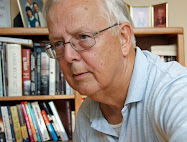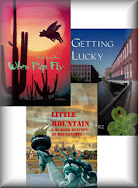Please give a warm welcome to Morgan St. James, who knows a thing or two about creative non-fiction, an area quite new to me. Take it away, Morgan ...
First of all, Bob, thanks so much for asking me to write about “creative nonfiction.” Many people are a bit flummoxed when they hear this and want to know “what in the world is creative nonfiction?”

Well, the genre of creative nonfiction is enjoying a renaissance of sorts these days. I’m even working on one myself—a book entitled
Confessions of a Cougar, targeted for release late this year
. The title should give you a pretty good idea of what it's about, so we won’t go there today, but watch for it to come out. It is a very “interesting” read.
The range is wide. There is fertile ground for creative non-fiction because so many out-of-the-ordinary things happen in real life. It can be anything from life as a spy for Churchill to the child of a parent who was one of America’s Most Wanted to a romantic romp. Maybe this genre is enjoying resurgence because reports of crisis or bizarre experiences spew from every newscast, tabloid, radio talk show and more. Reality shows demonstrate the degree of humiliation or challenge a human being is willing to endure for money and publicity. Some stories are fascinating, some make the heart go atwitter, and some cause revulsion. Defining creative non-fiction as “not fiction” is almost like calling classical music “non-rock.”
It actually started centuries ago

Back in the days of yore, literature was mostly non-fiction—it just wasn’t called that. Books recounted actual events in a storytelling style. Myths were basically the fiction of the day. It is natural for people to tell stories about events in their life, and that said, I must be the poster child for over-the-top stories. If anything, I almost have too many of my own stories. Sometimes I have to heed a mental “T-Sign” and slow it down, so for the most part they turn up as scenes in my fiction books.
Example of a creative non-fiction story
One of the award-wining stories in the recently released
The MAFIA FUNERAL and Other Short Stories collection is
The Second Time Around—a hilarious, over-the-top story about a woman who remarried her first husband thirty-six years after getting divorced. When Husband #4 died at the race track with a winning ticket in his hand, she decided to find Husband #1, the dashing tango dancer in her youthful memories. Although he turned out to be an aging, potbellied little man with a sprinkling of thin gray hair across his pate and a Desi Arnaz accent, to her he was Antonio Banderas. Who was the woman? My former mother-in-law. It’s a great story and a terrific example of creative non-fiction.

Most people have stories about what happened at the office, how we met our spouse, a hilarious misunderstanding and on and on
ad infinitum. When telling these stories, we often embellish the facts for the shock or humor value by adding details that didn’t actually happen and exaggerating or eliminating some that did. What does a story like that become?
Creative non-fiction. Facts mixed with fictional details.
Manipulating the story while being "sort of" true to facts
Think about it. Often the tendency is to leave out details that might make us look bad, stupid or gullible. When we are talking about someone we don’t like, they might be depicted as a real ogre when in fact they are only someone with bad habits. But it is more entertaining to give them extras that make them loathsome. Let’s not call these lies. They are “prevarications”—statements that don’t really give a direct and honest answer or opinion, or perhaps dance around a clear and truthful account of a situation. Adding controversy or being deliberately ambiguous or misleading, doesn’t qualify as a bald-faced out-and-out lie. At least that’s my story and I’m sticking to it.
What makes the story change?
Depending upon the point of view we choose, the story changes. Are we telling only what we can see (first person)? What someone else has seen and is now telling the reader (third person)? Perhaps a God-like knows all/sees all point of view that includes knowing thoughts of various people (omniscent). Or, a combination of any of the above. We determine who is important to the story, who will be most likeable, what events will trigger the reader’s emotion, etc. This might not be the way it really happened, but it makes for a better read. We are being creative with factual information plus some manipulation and prevarication thrown in for good measure.
In the end, however, if you want it to stay creative non-fiction, you are stuck with what really happened. Otherwise it becomes a creation of your imagination or pure fiction. Oak Tree Press will be releasing my latest novel, Who’s Got the Money?, written with co-author Meredith Holland. It is a government embezzlement story that happens in a division of the Department of Justice--federal prisons. The story is fiction but the inspiration was from first hand knowledge of the system. In other words, the scheme didn’t happen but from our experience we know it would be possible. As for the humor, well, that’s a bonus.
Whichever path you choose, it’s your story—you can play with the endings. Real stories don’t always turn out the way you want them if you are holding to reality.
Writer or not, I’ll bet you have some great stories. Why not try your hand at turning real events into a captivating combination of dialogue and narrative with a little help from your imagination. Even if it doesn’t get published it should be an interesting jaunt down Memory Lane.
MORGAN ST. JAMES co-authors the popular Silver Sisters Mysteries series with her real-life sister Phyllice Bradner. She also writes and co-writes novels, short stories and columns, publishes a Writers’ Tricks of the Trade monthly E-Zine newsletter, and more. Her books are available at most online booksellers or from your favorite local bookstore. Morgan’s talks and workshops have been praised by attendees at conferences, meetings and events. The Writers’ Tricks of the Trade webinars, sponsored by www.savvyauthors.com, begin on March 6. There is still time to register.




















